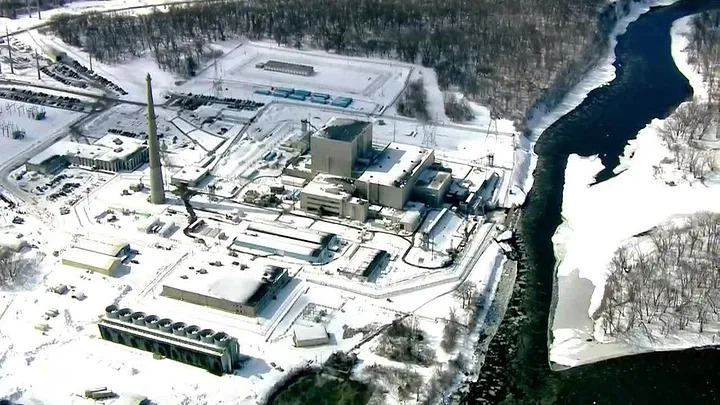Author: Kiersten Sundell
For a discussion, head to Generation Atomic’s tik tok to watch our rundown on Monticello. For now, here are the facts.
In the surrounding area of any nuclear plant, there are underground monitoring wells which routinely report on water quality. On November 22, tritium was detected in the water around the Xcel Energy Monticello Nuclear Generating Plant in Minnesota, which was reported to the Nuclear Regulatory Commission (NRC) for monitoring. On December 19th, the NRC pinpointed the source of the leak, which turned out to be a pipe deep underground that stretched between two buildings. The leak was stopped quickly afterward.

The total water leaked was about 400,000 gallons. The Minnesota Pollution Control Agency confirmed that the leak has not left the site, entered the Mississippi River, or contaminated drinking water sources.
But let’s talk tritium. How is this radioactive hydrogen isotope different from uranium?
Well, first of all, it has a half-life of 12 years, as opposed to uranium-235’s 700 million years. More importantly, though, is that it emits radiation that can’t even pass through the first layer of human skin, and you can usually hold it with just gloves on.
If you were to ingest this tritiated water it might be harmful, but only in significant amounts. In most cases, you would die of water intoxication before you were affected by radiation poisoning.
Let’s assume that somehow, you got access to water from the Monticello spill, or it ended up in your backyard well. To receive the same dose as you’d get from a chest x-ray, you’d have to chug eight gallons of the tritiated water right from the leak. Incidentally, this is also the amount you receive after flying for 32 hours.
For more information visit the Minnesota Department of Public Health, the American Nuclear Society, or NRC websites.
Read more blogs:
https://www.generationatomic.org/blog/

